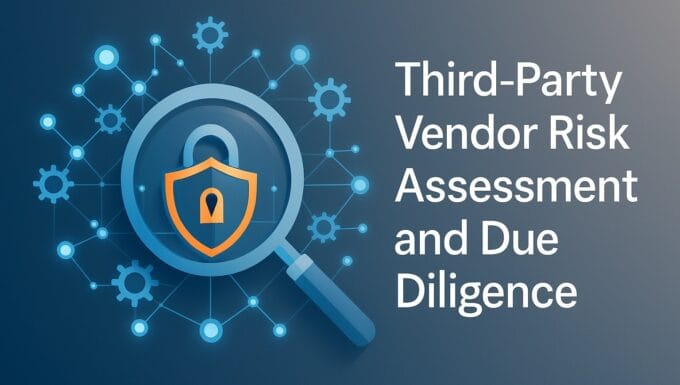Cybersecurity is no longer just a buzzword—it’s a necessity. With businesses, governments, and individuals relying heavily on digital systems, the risks of cyber threats have skyrocketed. At the heart of cybersecurity lies the concept of vulnerability —a term that often strikes fear into the minds of IT professionals and organizations alike. But what exactly is a vulnerability, and why does it matter so much? In this guide, we’ll break down everything you need to know about vulnerabilities in cybersecurity, from definitions to detection, mitigation, and prevention.
What Is Vulnerability in Cybersecurity?
In simple terms, a vulnerability is any weakness or flaw in a system, network, or software that can be exploited by malicious actors to gain unauthorized access, steal data, disrupt operations, or cause harm. Think of it as an unlocked door in your house—a potential entry point for intruders.
Vulnerabilities can exist in various forms, including outdated software, misconfigured servers, weak passwords, or even human error. The consequences of exploiting these vulnerabilities range from minor inconveniences to catastrophic breaches that cost millions of dollars and damage reputations. For instance, the infamous Equifax breach of 2017 exposed the personal data of 147 million people due to a known but unpatched vulnerability in their web application framework.
Ready to dive deeper? Let’s explore the types, causes, and real-world implications of vulnerabilities in cybersecurity.
Types of Vulnerabilities in Cybersecurity
Understanding the different types of vulnerabilities is crucial for identifying and addressing potential risks. Here are some common categories:
Software Vulnerabilities
These occur when there are flaws in the code or design of software applications. Examples include:
- Buffer Overflows : When a program tries to store more data than its allocated memory space.
- SQL Injection : A technique where attackers manipulate database queries through user input fields.
- Zero-Day Exploits : Vulnerabilities that are unknown to developers and thus unpatched until discovered.
Network Vulnerabilities
Weaknesses in network infrastructure can expose systems to attacks. Common examples include:
- Open Ports : Unsecured communication channels that allow unauthorized access.
- Unencrypted Data Transmissions : Sensitive data sent without encryption can be intercepted.
- DDoS Attacks : Distributed Denial-of-Service attacks overwhelm networks with excessive traffic.
Human Vulnerabilities
People are often the weakest link in cybersecurity. Human-related vulnerabilities include:
- Phishing Scams : Deceptive emails or messages trick users into revealing sensitive information.
- Social Engineering : Manipulating individuals into divulging confidential data.
- Weak Password Practices : Using predictable or reused passwords makes accounts easy targets.
Hardware Vulnerabilities
Physical devices like routers, servers, or IoT gadgets can also have security gaps. For example:
- Firmware Flaws : Outdated firmware may contain exploitable bugs.
- Unsecured USB Devices : Malware can spread via infected USB drives.
For a comprehensive list of known vulnerabilities, check out resources like MITRE’s Common Vulnerabilities and Exposures (CVE) Database .
Causes of Vulnerabilities
To effectively combat vulnerabilities, it’s essential to understand their root causes. Here are the most common culprits:
Outdated Software
One of the biggest contributors to vulnerabilities is failing to update software regularly. Developers frequently release patches to fix bugs and address newly discovered threats. Ignoring updates leaves systems exposed.
Misconfigurations
Even the best tools can become liabilities if not configured properly. Misconfigured firewalls, cloud storage buckets, or permissions settings can create gaping security holes.
Lack of Security Awareness
Many vulnerabilities arise because employees aren’t trained to recognize phishing attempts or follow secure practices. This is why cybersecurity awareness training is critical.
Third-Party Integrations
Using third-party apps or services introduces additional risk. If those external vendors have poor security measures, they could compromise your entire system.
Insufficient Testing
Without rigorous testing during development, vulnerabilities can slip through the cracks. Techniques like penetration testing and vulnerability scanning help identify issues before deployment.
For insights into how vulnerabilities emerge, refer to OWASP’s Top Ten Security Risks , which highlights the most prevalent threats facing applications today.
Detecting and Mitigating Vulnerabilities
Prevention is better than cure—but sometimes, vulnerabilities slip past defenses. That’s why detecting and mitigating them quickly is vital. Here’s how organizations tackle this challenge:
Vulnerability Scanning Tools
Automated tools scan systems for known vulnerabilities. Popular options include:
- Nessus : A widely-used vulnerability scanner.
- Qualys : Offers cloud-based vulnerability management solutions.
- OpenVAS : An open-source alternative for smaller teams.
Penetration Testing
Also known as ethical hacking, penetration testing involves simulating attacks to uncover weaknesses. It’s a proactive way to test defenses under real-world conditions.
Patch Management
Regularly applying patches ensures systems stay up-to-date. Automated patch management tools streamline this process, reducing the window of opportunity for attackers.
Intrusion Detection Systems (IDS)
These monitor network traffic for suspicious activity. IDS tools alert administrators to potential breaches, allowing them to respond swiftly.
Incident Response Plans
Having a plan in place minimizes damage when vulnerabilities are exploited. This includes isolating affected systems, notifying stakeholders, and restoring backups.
For practical advice on vulnerability detection, visit SANS Institute’s Cybersecurity Resources .
The Impact of Vulnerabilities
The consequences of unaddressed vulnerabilities can be devastating. Here are some sobering examples:
- Financial Losses : Companies spend billions recovering from breaches caused by vulnerabilities. For example, the WannaCry ransomware attack cost businesses over $4 billion globally.
- Reputation Damage : Customers lose trust when companies fail to protect their data. Target’s 2013 breach led to a massive drop in sales and customer loyalty.
- Legal Repercussions : Regulations like GDPR impose hefty fines for failing to safeguard sensitive information.
It’s clear that ignoring vulnerabilities isn’t just risky—it’s potentially ruinous.
Final Thought
Vulnerabilities are an inevitable part of the digital landscape—but they don’t have to spell disaster. By understanding what vulnerabilities are, how they arise, and how to detect and mitigate them, you can significantly reduce your risk of falling victim to cyberattacks. Remember, cybersecurity is a continuous process, not a one-time fix. Stay vigilant, keep learning, and prioritize protection.
As the saying goes, “An ounce of prevention is worth a pound of cure.” So, take action now to secure your systems and safeguard your digital future. After all, in the ever-evolving world of cybersecurity, knowledge truly is power.nd identifying areas for improvement. Together, we can build a safer digital future.
FAQs About Vulnerabilities in Cybersecurity
What Is the Difference Between a Vulnerability and a Threat?
A vulnerability is a weakness, while a threat refers to the potential danger posed by someone exploiting that weakness. Not all vulnerabilities lead to threats, but they increase the likelihood of one.
How Can I Prevent Vulnerabilities in My System?
Start with regular updates, strong password policies, employee training, and robust security tools. Conduct routine audits and tests to identify and fix issues early.
Are All Vulnerabilities Dangerous?
Not necessarily. Some vulnerabilities may pose minimal risk depending on the context. However, it’s best to address all identified weaknesses to avoid future problems.
What Is a Zero-Day Vulnerability?
A zero-day vulnerability is a previously unknown flaw that hackers exploit before developers can issue a patch. These are particularly dangerous because there’s no immediate fix available.
Where Can I Learn More About Cybersecurity Vulnerabilities?
Check out authoritative sources like NIST’s National Vulnerability Database or Cisco’s Cybersecurity Reports .

















Your blog post was really enjoyable to read, and I appreciate the effort you put into creating such great content. Keep up the great work!
Your blog is a ray of sunshine in a sometimes dark and dreary world Thank you for spreading positivity and light